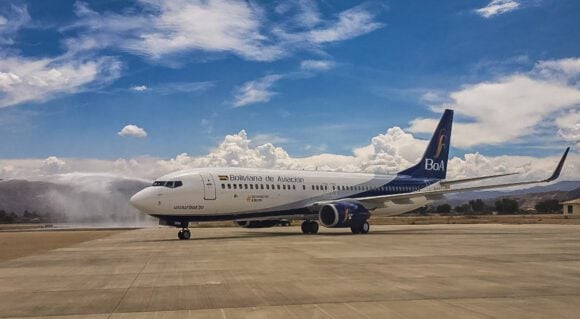
250932705 4613660262004813 943758162098049375 n
UPDATE – United Airlines is bullish about its future outlook and expects to return to full-year profitability again in 2022. It reported a $1.4 billion loss for Q1 on April 20, but Q2 is promising to produce a robust operating revenue. United expects full-year profit thanks to persistent demand.
The language in the first quarter media statement is much more positive than during its FY21 results presentation in January. Back then, United indicated the Omicron crisis had a temporary, yet significant enough effect to most likely delay a return to full profitability to 2023. But in Wednesday’s release, the carrier expresses the same optimism again for 2022 as last October just before Omicron hit.
Still, it was Omicron that spoiled the first quarter, producing a $1.377 billion net loss compared to $-1.357 billion in 2021. The operating loss was almost identical at $-1.376 billion versus $-1.381 billion in the previous year. Revenues more than doubled to $7.566 billion from $3.221 billion, of which $6.348 billion was from passengers (2021: $2.316 billion) and $627 million from cargo ($497 million). Capacity was down by nineteen percent compared to 2019.
Up were expenses, to $8.942 billion ($4.602 billion). At $2.88 per gallon, fuel costs were up to $2.230 billion compared to $851 million in 2021. United ended the quarter with $20 billion in liquidity and reduced its debt by $700 million.
Business bookings above 2019 levels in recent weeks
Already in January, United reported strong forward bookings for February, March, and the coming months, even speaking of “persistent strength of demand.” Business travel is also rapidly returning, with yields in recent weeks ten percent up from 2019. The airline says that Q2 will produce the strongest second quarter in its history, with total revenues per available seat miles (TRASM) seventeen percent up from 2019 levels and an operating margin of ten percent, which is just 2.9 percent below 2019. Capacity should be at 87 percent of 2019. Higher fuel costs of up to $3.43 per gallon are taken into account in this guidance.
As announced earlier, United will re-introduce its fleet of 52 Boeing 777-200s with Pratt & Whitney engines that was grounded after one aircraft suffered an engine failure in early 2021. They will gradually return to service to build back capacity. This includes routes to Asia, which has seen a recovery in some countries lately except Japan and China. Traffic on the transatlantic network will be up by 25 percent but the carrier is bullish about all long-haul traffic. The reintroduction of the 777s will be a key ingredient to improve its costs per available seat miles (CASM) excluding fuel and special items.
Capex lower as deliveries slip into 2023
As far as new aircraft are concerned, United expects no 787 deliveries until Q3, when two should join the airline with another two in Q4. This second quarter should see the delivery of two MAX but this goes up to nineteen in Q3 and even 25 deliveries in Q4. United is taking supply chain and manufacturing challenges into account and has reduced its Capex for this year by $600 million to approximately $5.3 billion. The carrier is assuming that deliveries of two of eight 787s and seven of 53 MAX will slip into 2023.
Despite the uncertainty around the MAX 10 potentially needing a cockpit system update if it fails to meet the certification deadline set for December 31, United is confident that it will take delivery of a mix of MAX 8s, -9s, and -10s next year. In 2023, United will also get the first of seventy Airbus A321neo’s it ordered last June, with the first of fifty A321XLRs to arrive in 2024.
Views: 1



